Breadmaking - introduction
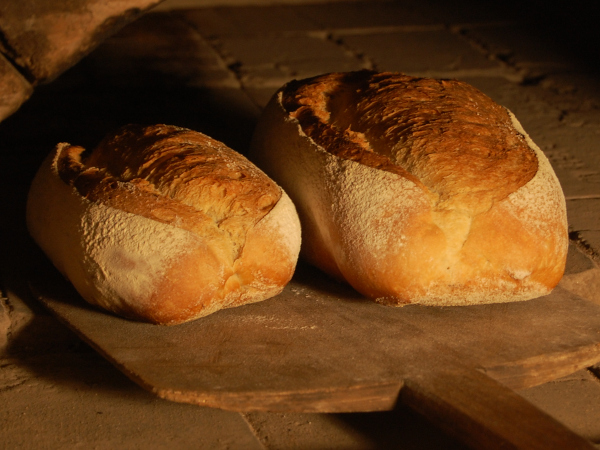
“The smell of good bread baking, like the sound of lightly flowing water, is indescribable in its evocation of innocence and delight.” – M. F. K. Fisher
Contents
What is it breadmaking?
It’s making bread with your own hands, with flour, water, salt and (if you’re making leavened bread) some kind of raising agent. The other essential ingredient is time.
There are two main types of bread – leavened and unleavened (or flat). Leavened bread contains gases, produced by some sort of raising agent. This could be baking powder (Irish soda breads), baker’s yeast (most commercial and home-made breads) or wild yeast (sourdough breads). Unleavened breads have no raising agents, and are therefore flat – like chapatis, tortillas, rotis and dosas. Focaccia, pita and naan breads are slightly leavened.

Sourdough breads are at the core of the recent explosion of ‘artisan baking’ – people have rediscovered ancient ways of making bread. Baker’s yeast is one particular strain of yeast, chosen because it’s good at raising bread quickly. But there’s a huge range of wild yeasts out there – all around us in the air and on plant materials. With sourdough, wild yeasts are nurtured in a ‘starter culture’ – from old dough that can be ‘fed’ more flour and water, and kept indefinitely at room temperature. The starter culture is a medium full of the micro-organisms that will raise your loaf for you. It’s called sourdough because the fermentation is not just by wild yeast, but by a combination of wild yeast and bacteria; the bacterial fermentation gives a slightly sour flavour.

The earliest evidence for very basic breadmaking is, unbelievably, around 30,000 years ago, from the starch of plant roots. Each culture has its own special techniques and recipes. In Europe, bread has always been the staple – the ‘staff of life’.
What are the benefits of breadmaking?
After the war, large commercial bakers developed the Chorleywood breadmaking process, that uses flour, water, enzymes, chemical oxidisers and emulsifiers, vast quantities of yeast and very little time. The ingredients are blended at high speed, left for 45 minutes and baked for 20 before cooling and packaging. Speed is of the essence, and the result is something pretty indigestible.

The Chorleywood process was developed to make more money, and nothing else. It results in an inferior product in terms of taste and nutritional value, but it’s quick and therefore makes more money for corporate bakers – all the ones who advertise on TV. As with many things, we took a wrong turn after the war, and a growing minority are beginning to see the light now. More people have started to bake their own or buy well-made bread from small artisan bakeries. Sourdough breads became so popular that they can be found in most supermarkets now. Home-made bread tastes better, is better for you, makes the whole house smell good and is a great way of making friends.

Your home-made bread will have even more nutritional value if you use stone-ground flour, because this process doesn’t destroy nutrients during the milling process. Commercial baking involves steel roller milling and heat, which damages the oils, particularly vitamin E oil. It will have environmental benefits too if you use organic flour, especially if it’s locally-sourced. If you’re a real purist, you could get flour from UK wheat, milled using a water wheel or windmill. This may sound unlikely, but it’s not impossible – there’s been a renaissance in this kind of milling too. Check your local wholefood shops, and see here for a list of working wind and water mills in the UK.

A potential disbenefit of home breadmaking is the use of thousands of small ovens instead of a few large ones – possibly increasing energy use. However, when you bake bread, that’s the time to cook something else too – biscuits as the oven’s warming up for example, and a stew underneath the bread as it’s baking. You could also use a wood-fired oven; and home baking has to be measured against the disbenefits of a centralised system with huge factories and fleets of trucks.

What can I do?
Artisan bread is more expensive than commercial bread (not surprisingly, as it contains things like flavour and nutrients, as well as requiring more time and skill). Look out for small artisan bakers, or check the Real Bread Finder on the website of the Real Bread Campaign. Or you can save money by making your own. To get a really good, nutritious, tasty bread you have to nurture it. It takes time, but you don’t have to attend to it for the whole time – it can be left to do its own thing.
You’ll need: hands; a mixing bowl; an oven; baking tins / baking sheet; something to measure / weigh with; and a timer, so you can carry on with other things and be reminded when you need to do something. You don’t need any specialist equipment – you can find everything in charity shops.
For yeasted or sourdough bread: mix together the flour, water, salt and yeast (or sourdough starter for sourdough bread; here’s how to make a sourdough starter, and there are plenty of other sources online) and knead (leave sourdough for an hour or so after mixing first). Kneading is to make sure it’s mixed well, and to develop the gluten. Gluten is present in wheat flours (and others, but there’s a lot in wheat) – it’s a protein, and it’s elastic. It forms a web that traps the gas (CO2) from the fermentation of the yeast (the yeast dies during baking, by the way).

Kneading makes the gluten stronger and more elastic so it does its job better. Leave to rise in a bowl (this first rise is called bulk fermentation by bakers) for around 2 hours for yeasted or 4-8 hours for sourdough. Then divide and shape it and put into tins or onto a baking tray (or into baskets that can be tipped out onto a tray later). Leave it to ‘prove’ for 2 (yeasted) or 4 hours (sourdough). Make cuts in the top (which allows the loaves to rise evenly) and bake for 35-45 minutes (yeasted or sourdough). Take out and leave to cool on a rack.

For flat breads, you can either add some raising agent (e.g. pita), or not (e.g. chapatis). It’s the simplest and oldest bread making technique. You just mix flour, water, salt and a bit of oil and cook it on a griddle or a hot stone. Naan bread is often cooked by sticking it to the inside wall of a tandoor oven.
You can make white bread if you prefer it, but wholemeal bread has more minerals, vitamins and fibre.
Specialist(s)
Thanks to Katherine Hallewell of Wholewoods for information
The specialist(s) below will respond to queries on this topic. Please comment in the box at the bottom of the page.

Sonya Hundal has been baking with a commercial wood-fired oven in rural Lincolnshire for fifteen years and her bakery, Greenfield Bakers is focused around making slow-fermentation bread with seasonal and local produce for local communities. The stoneground flour used in the bakery comes from the Maud Foster Windmill in Boston and a third of the wood used for the oven is coppiced from trees planted when the business was established. Sonya is a member of the Real Bread Campaign and has recently contributed to their diversity project.

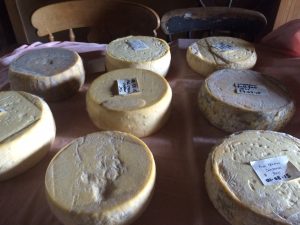
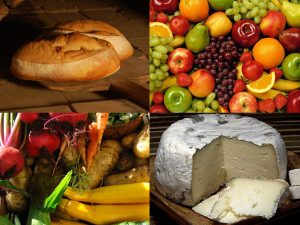
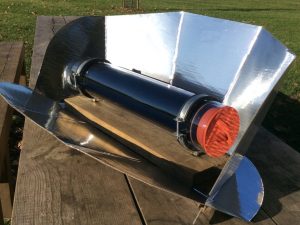
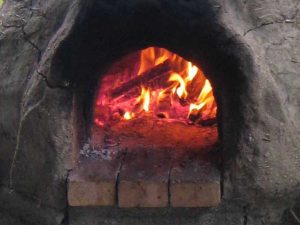
14 Comments
Cool
a very lovely article and Im inspired now to make my own…perhaps a weekend job!
A very informative article which whets the appetite to start baking a loaf or two.
Hello, thankyou for the article.
I think you should check with Coeliac UK re. Coeliacs and sourdough though. Coeliac is not a wheat allergy, it is an autoimmune disorder. Gluten is the protein in the wheat. If the gluten was destroyed, it would not be there to trap the gases in the bread, and the bread would collapse, so I am guessing that the sourdough, although much more digestible for those with a wheat intolerance or problem with FODMAPS, would not be safe for Coeliacs.
Sorry my first comment was not very clear. I am putting this up not to criticise your article (which I enjoyed and was a useful intro to sourdough) but in case it is useful for anybody who is newly diagnosed as coeliac or has a guest/family member who is coeliac.
Gluten, which is harmful for coeliacs, is not eliminated by using the sourdough method. (If there were no gluten, the bread would not rise). A coeliac friend goes into shock, which is really dangerous, simply through contact with a tiny amount of gluten. Even if someone coeliac appears not to react to the gluten, it is damaging them.
For many people who are wheat intolerant (not Coeliacs), their problem is with the fermentable carbohydrates in wheat, and here sourdough is the hero because it digests these carbohydrates, making the bread more digestible.
Right, I managed to make that *really* boring but I hope it is helpful to someone.
Meanwhile… I love love love sourdough and it’s the first time I’ve not had problems with bread. My new prob is scoffing too much of it. So thankyou for the useful article!
Barbara – thank you. I think you’re right, and I’ve changed the intro accordingly, and added a link to additional info.
For anyone travelling through Nottinghamshire I’d like to put a mention in for the fantastic Tuxford Windmill – tuxford-windmill.co.uk. As well as a Working Heritage Windmill and Cafe it also makes very good flour which adds an earthy, artisan taste to bread!
Hello, it’s me again.
Thankyou for editing the article Dave.
I read the edited article and – I’m sorry to say this because I love the article in every other respect – you imply it is a matter of opinion whether sourdough eliminates gluten. This is not something that can be changed by our opinions.
(Actually the first link is not to an article on sourdough at all, and the second says sourdough is absolutely not safe for coeliacs. Coeliac U.K. will confirm this for you if you ask.)
As in any case this is a great article about sourdough (and not about gluten), how about you just remove the claim that it is gluten-free? This would avoid confusion and not put anybody at risk.
Just to make it clear:
If it rises without the use of gums (from memory, gum amaranth is one – you can see on from the list of ingredients of any pack of gluten-free bread), then it contains gluten.
Without gluten, any baked product will not hold together and it will be flat, crumbly and dry – hence the expense and difficulty of baking gluten-free bread.
Great article in every other respect, could be even greater if it wasn’t misleading on this important point.
Thanks Barbara – duly removed.
We’re moving to a new system soon(ish) – where we’ll be building circles of specialists for all of our topics, and networking them sociocratically, and using a wiki to update information on the site. We’ll then have a much more dynamic information system, ensuring that things like this don’t slip through – and in fact can be debated on the back end of the wiki pages before going live.
Thanks Dave. That sounds great!
Thank you for an informative article. I think the benefits of heritage grains should be added to the article. Modern sorts of especially wheat are bred for responding to artificial fertiliser and technical purposes and this has led to deterioration of health properties – I think you will find a look at Hidden in Grains – and referring to it: http://hiddeningrains.se/ worth while. When NPK fertiliser is added and sorts are adapted to this other minerals can become deficient. The amino acid composition is also important and significantly different in modern grains compared to heritage grains.
What BS. Good mass produced bread is available at low prices in the grocery stores. I make sourdough but also buy multigrain yeast risen breads at the store at reasonable prices. I have other things to do besides endless kneading, rising and punching down. Cheap mass produced store bread costs .88 cents a loaf. This is a Godsend for most financially struggling families. Take a vitamin pill with it for cris sake.
Melissa – giant undemocratic corporations have control of our food system (as well as the finance system, news media, social media, energy, transport, water and transport industries). They’re now taking over academia, think tanks, education, health, social care and the political system. They have the power to maintain a status quo that’s destroying our life-support system – the biosphere of the only planet we know for sure has one. The appropriate response is self-provisioning and the commons economy (rather than any kind of ‘uprising’ or voting for a particular party). Not trying to convince you (you make sourdough anyway), just to provide info for those already convinced.
Melissa – been thinking more about your comment, and I actually think that individual households are not the place to bake bread. As you say, lots of other things to do, and bread ovens (plus blacksmith forges, pottery kilns, textile looms) should be organised at the community scale – for employment, and for sustainability (one central piece of kit, fired up for lots of people, rather than lots of pieces of kit, fired up separately, for just a few people).